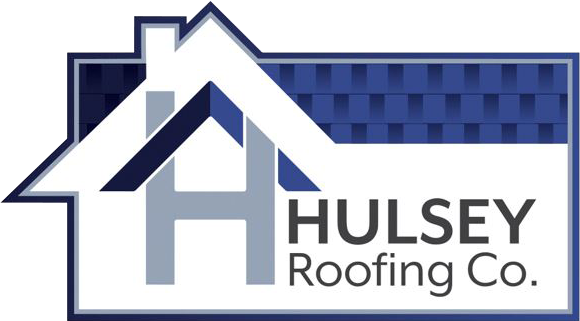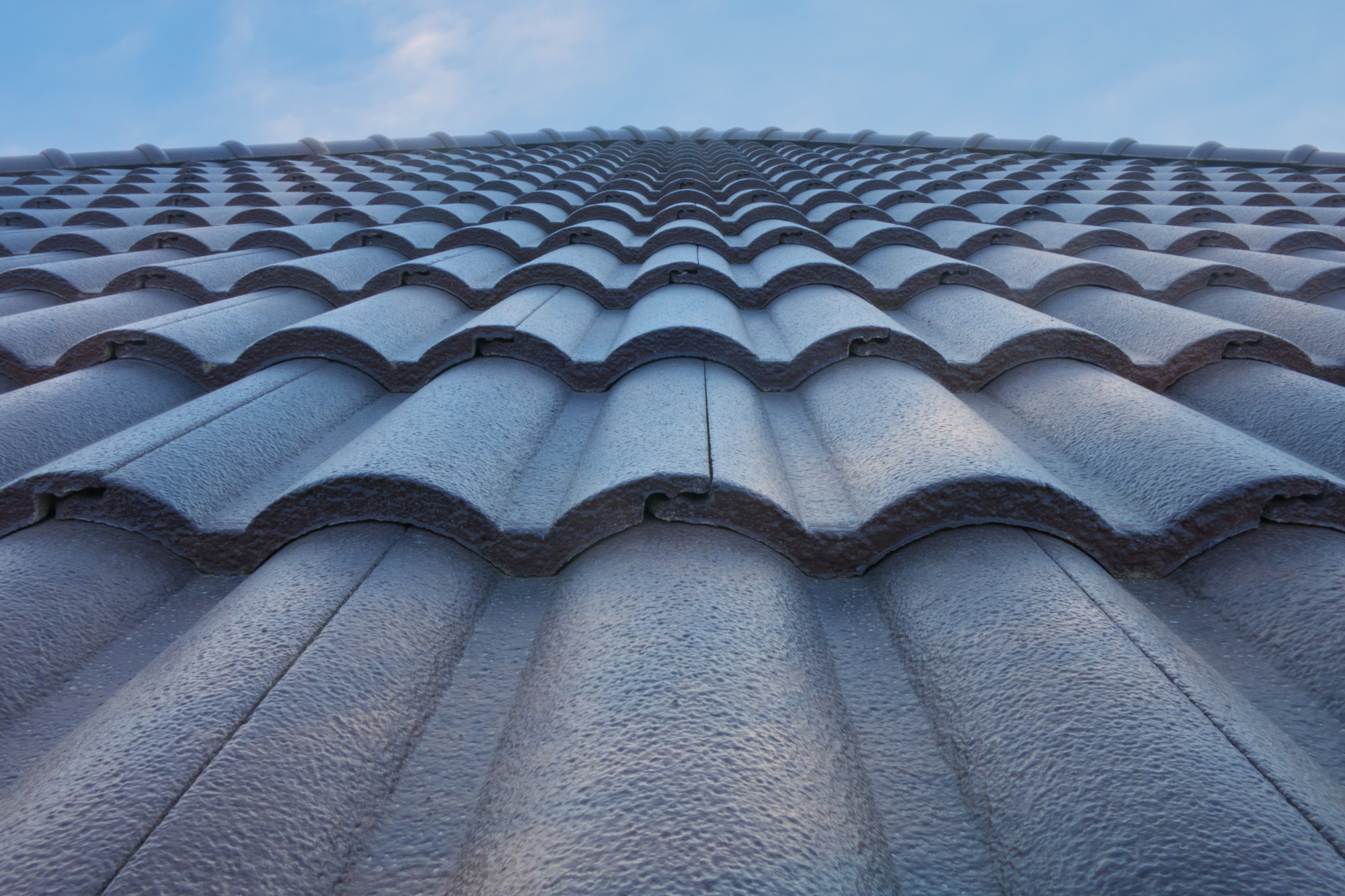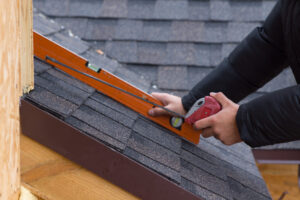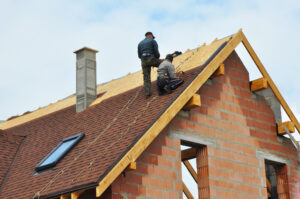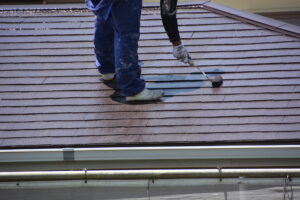Is your roof leaky or rusty? Has it fallen to total disrepair? Maybe it’s time for a roof repair or total replacement.
But, maybe you’re worried of a complete transition, and you’re not sure where to start. There are a lot of roofing choices, and occasionally contrasting them can be overwhelming. The two most popular styles, metal roofs vs shingles, have a lot of pros and cons between them.
In this tutorial, we’re going to discuss the distinctions between the two forms. We’re just trying to discuss all the various pros and cons. With this tutorial, you will be able to make an educated decision and start building on the sparkling new roof in no time.
Metal Roofs vs Shingles: What’s the Difference?
Traditionally, asphalt shingles have reigned supreme as the most common form of roofing for residences. They are easy to install and relatively cheap. There is an even broader variety of aesthetic alternatives available for shingles that are growing by the day.
However, metal roofing styles have been increasing in popularity in recent times. With a growing number of metal roofing options, more and more homeowners are considering the switch. Thanks to the durability of metal roofing, many are beginning to wonder: “Is metal roofing right for me?”
Both metal roofs and shingles have a number of finishing choices. Generally, any type may be made to suit your style of housing and your aesthetic needs. However, there are other factors that need to be taken into account when choosing between the two forms.
Roofing is a significant investment. You want something that will last you long-term. Therefore, it’s important to understand the pros and cons of each roofing type before you make such a big decision.
Types of Metal Roofing
Metal roofs became increasingly popular with homeowners. Metal is robust, lightweight, and relatively energy rich. In addition, due to the abundance of metal roofing choices, there is plenty of aesthetics to choose from.
The flexibility of metal roofs makes it an appealing choice for homeowners. It comes with a variety of styles and can be made from a number of materials. Designs include shingles, wooden shakes, tiles, and standing seams.
Metal roofing can be constructed from a number of different materials. Each material provides its own benefits. Additionally, the number of options means it can be easily customizable to meet your aesthetic desires.
Let’s break down the different types, and why you might consider each one. Types of metal roofing include:
Tin Roofs
Tin is a relatively inexpensive metal. It’s also pliable, making it easy to shape. In the past, tin was a popular choice, though it has become much less common in recent times.
Steel
If you’re looking for a durable metal, steel is at the top of the list. It’s particularly good at withstanding expansion and contraction, useful if you live somewhere with frequent weather changes. Because of all the benefits, however, it is a more expensive option.
Aluminum
Aluminum is a great moderately priced roofing option. Like steel, it expands and contracts easily. It’s also not very corrosive, which is great if you experience plenty of rain.
Copper
Copper is another natural, recyclable material. It also has a life expectancy of up to 100 years! Because of its longevity, however, it tends to be more expensive.
Zinc
Zinc is another long-lasting, and costly material. It’s natural and recyclable, though. It’s also very foldable, making it easy to mould.
This foldability, though, means that it’s a soft material. If you’re living somewhere with a lot of hail, this may not be the right option. Due to its softness, it is very vulnerable to hail injury.
So why do you choose metal roofing at all? What makes it stand out for you? What are some of the drawbacks?
Pros and Cons of Metal Roofs
Metal roofs have a lot going for them. However, in some cases, personal preference and cost may make metal a lackluster choice. Ultimately, the decision comes down to your wants and needs.
But, no matter the case, there are a few key points you should keep in mind while making your decision. Let’s break it down.
Pros of Metal Roofing
There are tons of benefits to metal roofs. One of the most popular is that it is more energy-efficient than asphalt shingles. This can make your home greener and more cost-efficient, especially in the long-run.
In comparison, metal roofing can be conveniently built on an old roof. It needs little maintenance and appears to be more durable. It also comes with additional fire resistance, which will keep your home safer.
Steel roofing insulation is lighter and 100% recyclable. And, if you’re looking for a better long-term investment, metal roofing will also boost the value of your home resale. You could also be registered for such tax credits and insurance discounts.
Everything and all, long-lasting metal roofs (which tends to mean longer warranties, as well). They are safe, effective, and could theoretically last a lifetime. If you’re looking to spend, metal roofs might be a fantastic choice.
Cons of Metal Roofing
Unfortunately, when it comes to metal roofs, there are a few disadvantages to remember. In fact, metal roof construction and components cost more on average than asphalt shingles. This means a much higher upfront expense to homeowners.
While metal roofs are long-lasting, it can be costly if damage happens. The cost of replacing the metal roof can be astounding. Repairs aren’t quick, either, particularly if you’re looking for DIY.
When it comes to installation, metal roofs are also tricky to install. If done incorrectly, you could be left with a noisy roof that’s subject to damage. Metal roofs can be particularly vulnerable to hail damage, especially when made from thinner, cheaper materials.
So, what about your other option? If the cons of metal roofs aren’t sounding very good for you, asphalt shingles may be the way to go.
Types of Asphalt Shingles
The most popular roofing material, asphalt shingles come in a wide variety. You can find them in different colors and textures that bring a traditional aesthetic to your home. Their relative low cost makes them an attractive option.
Asphalt shingles are composed of a tough asphalt coating and a ceramic or stone granular surface that lies on a core of fiberglass. Thanks to these granules, shingles are protected from UV rays and other climatic conditions.
Traditionally, the traditional three-tab was the most common form of shingle. However, the popularity of laminated and decorative asphalt shingles has increased. If these forms become more accessible, more homeowners prefer this path.
Architectural Shingles
Also known as “laminate” or “dimensional” shingles, architectural shingles have become increasingly common. This form of shingle is constructed of the same materials as its more standard equivalent. This form, however, is thicker and heavier, and hence more costly.
This added heft, though, ensures that they will last longer than conventional shingles. They come in a broad range, often even mimicking wood or slate. Many homeowners love the “dimensional” look that thick shingles produce on top of their houses.
Pros and Cons of Shingles
Like metal roofs, there are plenty of pros and cons to consider when deciding to install asphalt shingles. Some important things for any homeowner to consider include:
Pros of Asphalt Shingles
Asphalt shingles are a common option for roofing. This is due to their low installation costs and a wide range of options. They’re fast and easy to install, and typically last for quite a while.
A big advantage for shingle roofing is the potential to survive harsh winters. However, if any loss happens, it is easy to restore and much less costly to rebuild. They can also be fire-resistant, a perfect protection option for every house.
If you’re looking for a green option, shingles can be recycled. This means all your old shingles won’t be filling up a land-fill. Because of the versatility of shingle roofs, they remain a very popular choice.
Cons of Asphalt Shingles
There are a few drawbacks when it comes to asphalt shingles. Unlike metal roofing, your old roof must be totally removed before shingles can be installed. Additionally, the material is much heavier, which can weigh on your home’s infrastructure.
Beyond that, asphalt shingles are much less durable than concrete roofs. They are subject to a lot of wind and hail damage, as well as to the pressures of old age. This can include mildew, algae, and moss.
Low upfront installation costs could end up compounded, as more regular repairs are also required. In addition, the asphalt shingles trap the heat from the sun. This will heat up your house in the summers, and it’s not very energy efficient.
Choosing the Right Roof for You
Choosing the right roof can be a daunting task. As a long-term investment, you want to make sure you’re making the right choice. Ultimately, only you can make the choice between metal roofs vs shingles.
However, our experts are standing by to help you make your decision. Contact us to learn more about your options and get a free roofing estimate. We’ve served our community for over 40 years, and we’re ready to help serve you, too.
